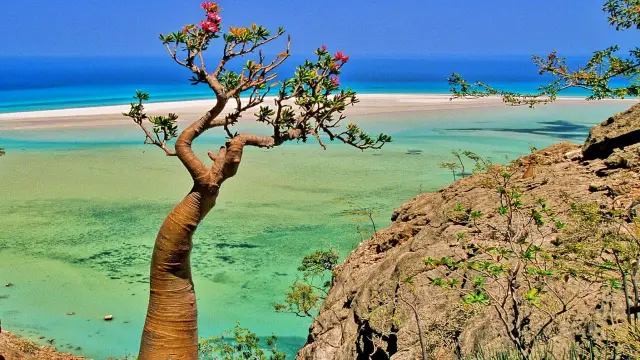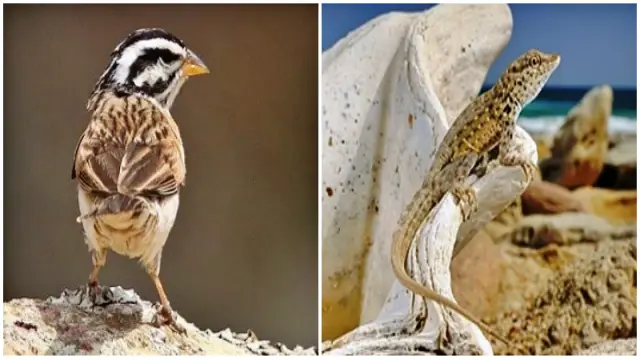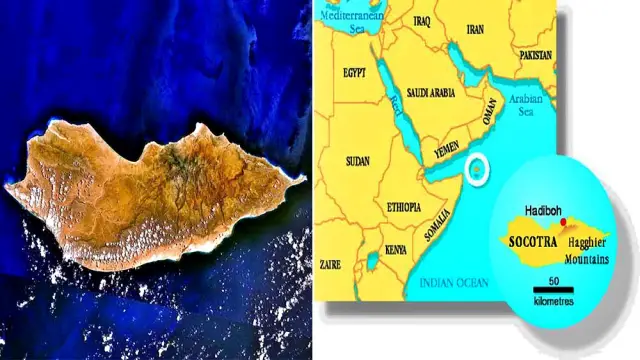Imagine a place where trees bleed crimson sap, mountains touch the clouds, and creatures exist nowhere else on Earth. Welcome to Socotra, a remote island cluster off Yemen’s coast, often called “the Galápagos of the Indian Ocean.” Isolated for 6 million years, Socotra’s bizarre landscapes and unique species make it a true natural wonder. Let’s explore this alien paradise!
Where Is Socotra? Geography of a Hidden Gem
Socotra lies 240 km east of Somalia (Horn of Africa) and 380 km south of Yemen, floating in the Arabian Sea. Its four islands—Socotra, Abd al Kuri, Samhah, and Darsa—form a UNESCO World Heritage Site. The largest island, Socotra, spans 3,625 km², boasting mountains, plateaus, and pristine beaches.

The terrain is wildly diverse:
- Haghier Mountains: Peaks reaching 1,503 meters, often shrouded in mist.
- Limestone Caves: Some stretch 7 kilometers underground.
- White Sandy Beaches: Contrast with turquoise waters and towering dunes.
This isolation and varied geography created a cradle for evolution, sheltering species unseen elsewhere.
Surviving Socotra’s Harsh Climate
Socotra’s climate is brutal yet beautiful. Average temperatures hover around 25°C, but summer heat can exceed 40°C. Monsoon winds batter the islands from May to September, while rainfall is scarce—just 250 mm yearly.
How do lifeforms thrive here? Adaptation. Plants and animals evolved to survive drought, wind, and heat, resulting in surreal forms. The island’s resilience is a testament to nature’s creativity.
Flora of Socotra: A Botanist’s Dream

Over 37% of Socotra’s 825 plant species grow nowhere else. Its flora looks ripped from a sci-fi film:
1. Dragon’s Blood Tree (Dracaena cinnabari)
This umbrella-shaped icon oozes red sap (“dragon’s blood”), used for dyes, varnish, and traditional medicine. Locals believe it heals wounds and boosts energy.
2. Desert Rose (Adenium obesum socotranum)
A bulbous, pink-flowered tree thriving in rocky soils. Its swollen trunk stores water for drought survival.
3. Cucumber Tree (Dendrosicyos socotranus)
The only tree in the cucumber family, with spiky leaves and a spongy trunk.
These plants evolved over millennia, untouched by external influences. Socotra’s flora isn’t just unique—it’s a living museum of evolution.
Wildlife: Birds, Reptiles, and Mysterious Mammals
While flora steals the spotlight, Socotra’s fauna is equally fascinating:

Birds
A birdwatcher’s paradise, Socotra hosts 140 species, including 10 endemics:
- Socotra Sunbird: A jewel-toned nectar-lover.
- Socotra Starling: Striking black feathers with white eyes.
- Socotra Warbler: A tiny songbird found only in highlands.
Reptiles
Look for geckos, skinks, and the Socotra Chameleon, blending into rocky outcrops.
Mammals
Only bats and feral cats roam here. No native mammals exist—proof of Socotra’s isolation.
The Soqotri people: Guardians of an Ecosystem
About 70,000 people call Socotra home. Descended from Arabian and African settlers, they speak Soqotri, an unwritten language related to ancient Himyaritic. Their lives revolve around fishing, herding goats, and harvesting frankincense.
What makes them special? Their deep respect for nature. Soqotri people use traditional farming methods, avoiding overharvesting. Thanks to their stewardship, the islands remain pristine.
Visiting Socotra: Travel Tips for Adventurers
Socotra isn’t your typical vacation spot. Here’s how to explore responsibly:
- Best Time to Visit: October–April (avoid monsoons).
- Getting There: Fly from Cairo or Abu Dhabi to Socotra Airport.
- Stay Eco-Conscious: Camp in designated areas; avoid plastic.
- Respect Culture: Dress modestly and ask permission before photographing locals.
Pro Tip: Hire local guides! They’ll show you hidden caves, secret beaches, and the best spots to see dragon’s blood trees.
Why Socotra Matters: Conservation Challenges
Climate change, invasive species, and overgrazing threaten Socotra. Conservation groups work with locals to protect habitats, but tourism must stay sustainable.
Your Role: Travel mindfully, support eco-tours, and spread awareness. Socotra’s magic lies in its fragility—let’s keep it alive.
Final Thoughts: Socotra’s Call to the Curious
Socotra isn’t just a destination—it’s a journey into Earth’s untamed past. From its alien trees to warm-hearted people, this island teaches us resilience and wonder. As one visitor said, “Socotra doesn’t feel real… until you realize it’s the most real place left.”
Ready to explore? Socotra’s secrets await.

